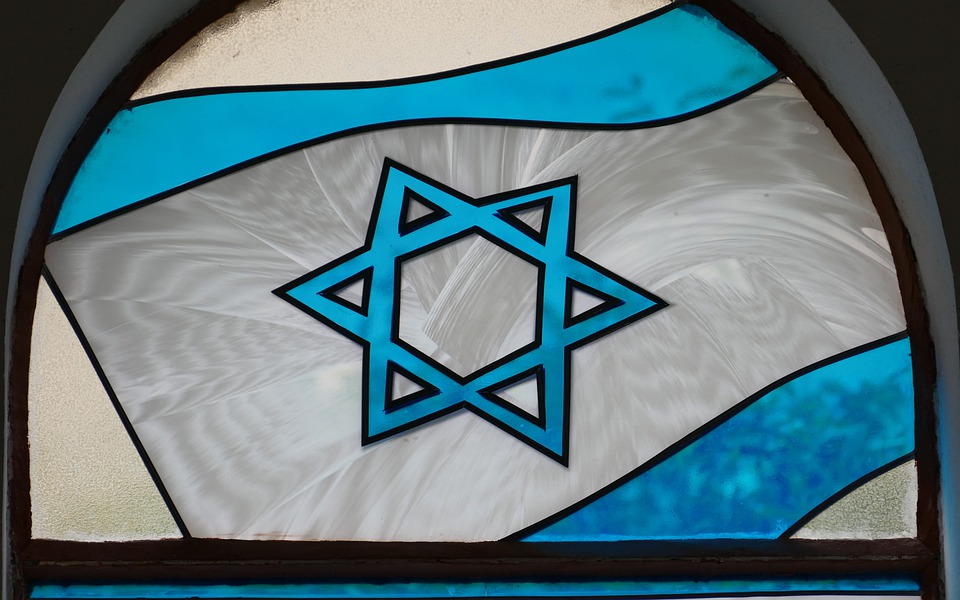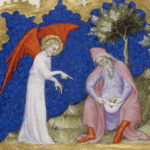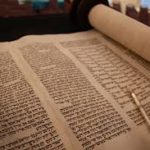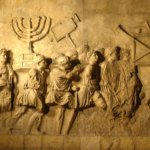World Religions Report – Judaism
The history of Judaism spans centuries of time and has been filled with triumph, pain, and a sense of continuous wandering as people who have been detached from their homeland. Judaism centers on the teachings in the Hebrew Scriptures, also known as the Old Testament. Tracing its roots back to the creation of heaven, earth, and humankind as outlined in the Hebrew Scriptures, Judaism takes up an identity with early faithful followers of the one true God. The belief in only one God, the supreme deity with no others to compete or compare is a central tenant to Jewish belief. The Jewish faith holds that this supreme and singular God made a pact, or covenant, with the Jewish people through faithful followers such as Abraham and Moses.
The first covenant between God and man occurred with Noah at the time of the flood. In exchange for his obedience, God promises to spare Noah and his family and promises to never again bring an end to the world. From the line of Noah came Abraham who was held up as an example of obedience and loyalty to God. Abraham maintained his faith and dedication throughout his long life, even in the face of losing his only son Isaac during a test of loyalty by God. Because of his loyalty and upright way of life, Abraham entered into a covenant with God. In exchange for his loyalty, God promised that Abraham would father a great nation. Abraham, his son Isaac, and grandson Jacob along with their wives Rebecca, Leah, and Rachel are viewed as the patriarchs and matriarchs of the Nation of Israel.
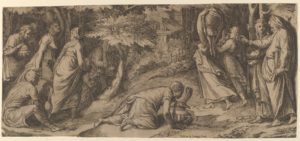 The growing Nation of Israel found itself enslaved by the Egyptians in Egypt. In the middle of this enslavement was born Moses, an Israelite baby who was adopted by the daughter of pharaoh after being found floating down the Nile river while she was bathing. After killing an Egyptian overseer for the mistreatment of an Israelite worker, Moses fled Egypt where he was chosen by God to return to Egypt and free the Israelite peoples from their captivity there. With his brother Aaron at his side, Moses returned to Egypt and led the Israelite peoples out of Egypt with the help and guidance of God and the 10 plagues that He set against the Egyptian peoples. It was during this time after the exodus from Egypt while the Israelites were wandering in the wilderness that God entered into yet another covenant with the Nation of Israel. On top of Mount Sinai, God handed down to Moses the Ten Commandments along with an additional series of rules and guidelines that would aid in governing the nation of Israel. In addition, the Nation of Israel would serve as God’s chosen peoples as long as they remained faithful to Him and followed the rules and guidelines that He laid out for them.
The growing Nation of Israel found itself enslaved by the Egyptians in Egypt. In the middle of this enslavement was born Moses, an Israelite baby who was adopted by the daughter of pharaoh after being found floating down the Nile river while she was bathing. After killing an Egyptian overseer for the mistreatment of an Israelite worker, Moses fled Egypt where he was chosen by God to return to Egypt and free the Israelite peoples from their captivity there. With his brother Aaron at his side, Moses returned to Egypt and led the Israelite peoples out of Egypt with the help and guidance of God and the 10 plagues that He set against the Egyptian peoples. It was during this time after the exodus from Egypt while the Israelites were wandering in the wilderness that God entered into yet another covenant with the Nation of Israel. On top of Mount Sinai, God handed down to Moses the Ten Commandments along with an additional series of rules and guidelines that would aid in governing the nation of Israel. In addition, the Nation of Israel would serve as God’s chosen peoples as long as they remained faithful to Him and followed the rules and guidelines that He laid out for them.
It was after 40 years of wandering in the wilderness that the Israelites were finally allowed to enter into the Promised Land. It was not until during the reign of Israel’s third king Solomon that a temple was built in Jerusalem that gave the Nation of Israel a central and stationary place of worship. This did not last long, however; King Solomon also allowed the building of shrines and temples to the gods of his foreign wives which angered God. The city of Jerusalem was attacked by the Assyrians and the Israelite peoples were disbursed. By 586 BCE, the city of Jerusalem had been sacked and the temple looted and destroyed by King Nebuchadnezzar and the Babylonians. This was seen as fitting punishment by God for the disloyalty of the Israelite peoples for allowing corruption and the worship of other gods into their society. After 50 years of exile, the Israelites were allowed back into Jerusalem and the rebuilding of the temple was authorized by the Persian King Cyrus. After more than 500 years, the temple in Jerusalem was once again destroyed by the Romans in 70 CE and by 135 CE Jerusalem had once again been reduced to ruins.
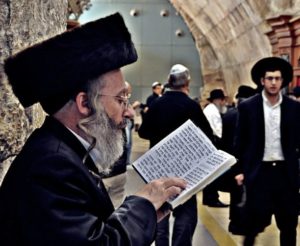 Judaism did not die out however but was kept alive by rabbis and through synagogues that focused on prayer and ethical behavior along with a renewed importance on the Jewish community. As the Jewish community tightened, anti-Semitic tensions between the Jewish and Christian communities were building. Beginning in 1095, the Jewish people were further scattered coming under strong persecution on rumors that they were aiding in attacks with other groups against Christians. Many Jews found safety in Poland but this came to an end when Greek Orthodox Christians led massacres in Poland. It was these massacres which ultimately led to the collapse of Poland. It was not until the late 1700s through the early 1800’s that the Jews finally found a respite, being accepted by those around them and able to take their place in mainstream society. Anti-Semitism flared up once more and caused an exodus of Jewish peoples once again from Eastern Europe. By the early 1900’s more than two million Jews had immigrated to the United States. Today, the United States hosts the world’s largest and most diverse Jewish population with more than 6 million people.
Judaism did not die out however but was kept alive by rabbis and through synagogues that focused on prayer and ethical behavior along with a renewed importance on the Jewish community. As the Jewish community tightened, anti-Semitic tensions between the Jewish and Christian communities were building. Beginning in 1095, the Jewish people were further scattered coming under strong persecution on rumors that they were aiding in attacks with other groups against Christians. Many Jews found safety in Poland but this came to an end when Greek Orthodox Christians led massacres in Poland. It was these massacres which ultimately led to the collapse of Poland. It was not until the late 1700s through the early 1800’s that the Jews finally found a respite, being accepted by those around them and able to take their place in mainstream society. Anti-Semitism flared up once more and caused an exodus of Jewish peoples once again from Eastern Europe. By the early 1900’s more than two million Jews had immigrated to the United States. Today, the United States hosts the world’s largest and most diverse Jewish population with more than 6 million people.
One of the most horrific moments of the 20th century, the holocaust took anti-Semitism to a new level by the Nazis during World War II. Hatred towards the Jews began stirring once again in Europe around the late 1800s and came to a boiling point at the hands of Adolf Hitler and the Nazi Party in Germany. Attempts to flee were rendered unsuccessful as surrounding countries refused to allow Jews entrance or refuge from the atrocities being waged against them. By 1942, Hitler’s “Final Solution” – large scale death camps set up with the intent of exterminating the Jewish race – was in place and scores of Jews were herded into the camps from across Europe. According to Nissan Dovid Dubov, “Public consensus, supported by the media, reassured us that we could no longer return to the Middle Ages. However, the philosophers and poets of Berlin, with their fine manners and high society, turned into the world’s greatest murderers. The Holocaust was not only perpetrated by monsters but conceived at by an entire nation numbering close to one hundred million people (Dubov, Nissan Dovid, 2005).” The atrocities endured by the Jews during this time had a mixed effect on those who survived. Some came out of the Holocaust with renewed faith and a stronger belief in God while others were shaken deeply, questioning the existence of God altogether.
In the modern-day, the Jewish people still undergo hardships and tensions surrounding their homeland around Israel and Palestine. This remains an area plagued by war and hostility between Israel and surrounding nations who are in competition for the area that many views as sacred and holy land. There has also been some separation within the Jewish community as those with different backgrounds converge. This has led to a variety of degrees of practicing Jews ranging from Ultra-Orthodox to non-Orthodox non-practicing ones who still identify with their background and heritage.
Chabad of Simi Valley
Simi Valley lies about 30 minutes north of Los Angeles, California. With a population of slightly over 100,000 the Chabad is situated on a quiet street on the east end of town. Driving by, one would mistake it for a nice home along a mostly residential street. A simple sign on a streetlight marking the building as something more than a residential home gives way to a humble and simple interior where services are held every morning and evening service is held on Friday. The services are conducted in Hebrew with a “beginner” service conducted in English afterward.
 The Chabad in Simi Valley is one of 2000 branches worldwide and is associated with the Lubavitch movement. Originating in White Russia during the 18th century, the Lubavitch movement embraced the doctrine of “Ahavat Yisrael,” when translated means “love for a fellow Jew.” This sect of Judaism embraces all Jews regardless of background or affiliation with the goal of uniting those of the Jewish faith around the world. This blends traditional Judaism with a modern approach to reach out to those who may have become alienated, in an effort to heighten the awareness of their Jewish heritage (Chabad of Simi Valley, 2009).
The Chabad in Simi Valley is one of 2000 branches worldwide and is associated with the Lubavitch movement. Originating in White Russia during the 18th century, the Lubavitch movement embraced the doctrine of “Ahavat Yisrael,” when translated means “love for a fellow Jew.” This sect of Judaism embraces all Jews regardless of background or affiliation with the goal of uniting those of the Jewish faith around the world. This blends traditional Judaism with a modern approach to reach out to those who may have become alienated, in an effort to heighten the awareness of their Jewish heritage (Chabad of Simi Valley, 2009).
Rabbi Nosson Gurary, an unassuming and soft-spoken man, heads the Chabad. Actively involved in all the programs and services throughout the week, the rabbi has dedicated his life to the study of Judaism along with developing and overseeing many of the outreach programs that the Chabad provides for women, children, teens, and seniors. He is fluent in Hebrew and conducts a Hebrew school on Sundays. This school has an extensive curriculum that covers not just the language but also involves reading from the Torah and learning about different parts of Judaism including its holidays, Jewish music, and art projects. This course is a basic, “Judaism for beginners,” as the rabbi describes it.
The members of the Chabad make up a small and close-knit Jewish community in Simi Valley and stick together. While this group does stick together and support each other, the rabbi describes some of the challenges of looking after his congregation. “We do many things together as a group, between our activities, services, classes, and events we all see each other on a regular basis and gather strength from each other. Important events like Passover that we just completed celebrating last month really builds a sense of thanks in the community for our beliefs and our endurance. Being as such, we are often viewed as a separatist people by our surrounding community and not open to outsiders coming into our place or worship or adopting our beliefs. The reality is that Judaism is a long path that is walked by those who are willing and able to follow the standards that are set out in the Torah. It is not easy to convert to Judaism and this often frustrates those that come in and want to convert. Our children are often seen as different as well when they attend school. This often becomes more difficult for them as they grow older. They often have a need to be accepted among their classmates and peers and sometimes this takes priority for them over their spiritual development. This, in turn, becomes difficult for the parents to deal with because they only want the best for their children.”
When asked about how the Chabad reaches out in a way that others may not, Rabi Gurary pointed to the many programs that the Chabad offers. “The Women’s Codesh Group offers a support network for women of all ages and backgrounds to discuss their experiences in a non-judgmental forum. Our Hebrew school reaches out to those of all ages who have an interest in Judaism and learning more about our beliefs, history, and culture. Our Chai Teen Club gives me a chance to spend time with our teenage members in an informal setting. I can talk with them and answer questions in a relaxed environment; this helps them to feel more comfortable talking about things that they may not in other situations. The Shmooze Club is another informal setting for newer members to get to know those in the congregation and help them to feel comfortable and welcome. The smile on Seniors is a volunteer program that we have. This program takes into account the needs of older members of our congregation that may not be able to attend the Chabad on a regular basis. We make sure and visit with them on a weekly basis to provide not only company to them, but spiritual encouragement as well.”
The rabbi also pointed out that Jewish holidays such as Shavout, Hanukkah, Purim, and Passover are important times in the Jewish community and in the congregation. “These holidays give us a time for learning, reflection, and togetherness. It offers spiritual refreshment to the members of the congregation and I think can offer a good point of introduction for new or newer members. They are an important part of our beliefs and really tie much of what we learn throughout the year together.”
Judaism Today
Judaism is known as one of the most adaptive religions in the world. It has survived centuries of time and some of the most severe religious persecution in history. Centered on congregation, community, and their belief in God, Jewish peoples have adapted to the situations and environments around them and maintain a belief system that revolves around study and learning. Never forgetting their past, the Jewish culture has remained strong despite adversity and continues to look to their future reward.
The Chabad in Simi Valley is one example of this adaptability, reaching out to those that more Orthodox Jewish organizations would normally ignore. Through the learning programs that they offer and the many informal settings that are provided for new and existing members, Judaism has become more accessible to those in the surrounding community. With continued efforts by both the Jewish and surrounding non-Jewish communities to be educated about, and tolerant of, the various belief systems that make up our culture, common ground and understanding can be established. It is through this understanding that we can co-exist peacefully and not repeat any of the mistakes and atrocities of the past.
References
Dubov, Nissan Dovid. (2005). Belief After the Holocaust. Retrieved May 3, 2009 from:
http://www.chabadsimi.org/library/article_cdo/AID/108398/ShowFeedback/true
Chabad of Simi Valley. (2009). About Chabad. Retrieved May 3, 2009 from:
http://www.chabadsimi.org/templates/articlecco_cdo/aid/302516/jewish/About-Chabad.htm

